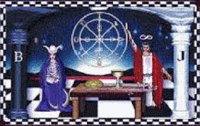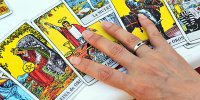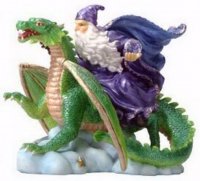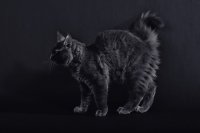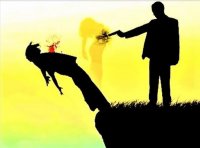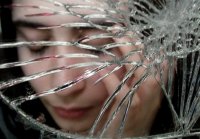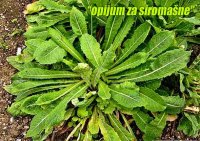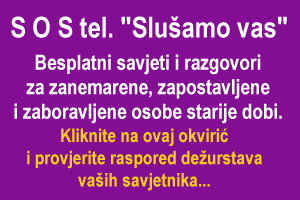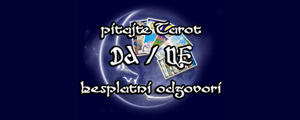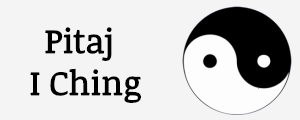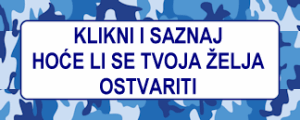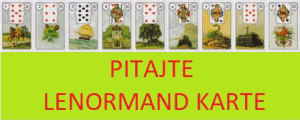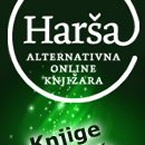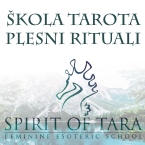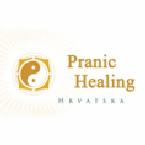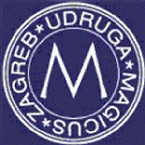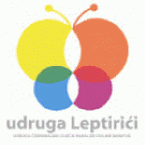Zaključak
Značaj eksperimentiranja na životinjama uvelike prenapuhuju oni koji imaju prikriveni ekonomski interes da se takva praksa nastavi i dalje. S obzirom da se eksperimentiranje na životinjama fokusira na umjetno stvorenoj patologiji, podrazumijeva konfuzne varijable te je potkopano razlikama između ljudske i neljudske anatomije, fiziologije i patologije, ono je suštinski nesigurna metoda za istraživanje procesa ljudskih bolesti. Milijarde dolara koje se svake godine investira u pokuse na životinjama iskoristile bi se puno učinkovitije, efikasnije i humanije kada bi ih se preusmjerilo u kliničko i epidemiološko istraživanje te programe javnog zdravstva.
Reference i bilješke
1. The Physicians Committee for Responsible Medicine (Washington, D.C., www.pcrm.org), the Medical Research Modernization Committee (Cleveland, Ohio, www.mrmcmed.org) i Europeans for Medical Progress (London, U.K., www.curedisease.net) zajedno imaju preko 10.000 liječnika i znanstvenika lanova, od kojih je većina jako kritična prema pokusima na životinjama.
2. Barnard ND, Kaufman SR. Animal research is wasteful and misleading. Scientific American 1997; Feb: 80-82.
3. Mukerjee M. Trends in animal research. Scientific American 1997; Feb: 86-93.
4. www.curedisease.net/news/040903.shtml.
5. Loeb JM, Hendee WR, Smith SJ, Schwartz R. Human vs. animal rights: In defense of animal research. Journal of the American Medical Association 1989; 262: 2716-2720.
6. Botting JH, Morrison AD. Animal research is vital to medicine. Scientific American 1997; Feb: 83-85.
7. Reines BP. On the locus of medical discovery. Journal of Medicine and Philosophy 1991; 116: 183-209.
8. Reines BP. On the role of clinical anomaly in Harvey’s discovery of the mechanism of the pulse. Perspectives in Biology and Medicine 1990; 34: 128-133.
9. McQuarrie I. The Experiments of Nature and Other Essays from the Porter Lectures. Lawrence, Kansas, University of Kansas Press, 1944.
10. Peller S. Quantitative Research in Human Biology and Medicine. Bristol, England, John Wright & Sons, 1967.
11. Beeson PB. The growth of knowledge about a disease: hepatitis. American Journal of Medicine 1979; 67: 366-370.
12. Good RA. Runestones in immunology. Journal of Immunology 1976; 117: 1413-1428.
13. Good RA. Keystones. Journal of Clinical Investigation 1968; 47: 1466-1471. Beeson i Good nedavno su istaknuli da se ne protive eksperimentiranju na životinjama i da to smatraju važnim za napredak medicine. Ipak, njihovi članci govore za sebe.
14. Greek CR, Greek JW. Sacred Cows and Golden Geese. New York, Continuum, 2000.
15. Greek CR, Greek JW. Specious Science. New York, Continuum, 2002.
16. Greek JS, Greek CR. What Will We Do If We Don’t Experiment on Animals? Medical Research for the Twenty-First Century. Victoria, B.C., Trafford, 2004.
17. Brecher R. The Consumers Union Report on Smoking and the Public Interest. Mount Vernon, Consumers Union, 1963.
18. Doll R, Hill AB. The mortality of doctors in relation to their smoking habits: A preliminary report. British Medical Journal 1954; 1: 1451-1455.
19. Northrup E. Men, mice, and smoking, in Science Looks at Smoking. New York, Coward-McCann, 1957, str. 133.
20. Enterline PE. Asbestos and cancer, in Gordis L (ed). Epidemiology & Health Risk Assessment. New York, Oxford University Press, 1988.
21. Gardner MJ, Snee MP, Hall AJ, et al. Results of case-control study of leukaemia and lymphoma among young people near Sellafield nuclear plant in West Cumbria. British Medical Journal 1990; 300: 423-429.
22. Wald ML. Pioneer in radiation sees risk even in small doses. New York Times 8. prosinca 1994., str. A1.
23. Stewart A. Alternative sources of risk estimates for cancer effects of radiation. The Mount Sinai Journal of Medicine 1995; 62: 380-385.
24. Gould JM, Sternglass EJ. Nuclear fallout, low birthweight, and immune deficiency. International Journal of Health Science 1994; 24: 311-335.
25. Bross ID. Fifty Years of Folly and Fraud ‘In the Name of Science.’ Buffalo, Biomedical Metatechnology, 1994.
26. Ainley CC, Senapati A, Brown IM, et al. Is alcohol hepatotoxic in the baboon? Journal of Hepatology 1988; 7: 85-92.
27. Dowling HF. Fighting Infection. Cambridge, Massachusetts, Harvard University Press, 1977.
28. Parish HJ. Victory with Vaccines. Edinburgh and London, E&S Livingstone Ltd., 1968.
29. Paul JR. History of Poliomyelitis. New Haven, Yale University Press, 1971.
30. Sabin AB. Statement of Albert B. Sabin, M.D. Hearing before the Subcommittee on Hospitals and Health Care of the Committee on Veterans’ Affairs of the House of Representatives, 26. travnja 1984., serijski br. 98-48.
31. Enders JF, Weller TH, Robbins FC. Cultivation of the Lansing strain of poliomyelitis virus in cultures of various human embryonic tissue. Science 1949; 109: 85-86.
32. Domingo RT, Fries C, Sawyer P, Wesolowski S. Peripheral arterial reconstruction. Transplantation of autologous veins. Transactions of the American Society of Artificial Internal Organs 1963; 9: 305-316.
33. Hume D. Experiences with renal homotransplantation in the human subject Journal of Clinical Investigation 1955; 34: 327-381.
34. American Medical Association Council on Scientific Affairs. Animals in research. Journal of the American Medical Association 1989; 261: 3602-3606.
35. Bailar JC III, Gornik HL. Cancer undefeated. New England Journal of Medicine 1997; 336: 1569-1574.
36. Beardsley T. A war not won. Scientific American 1994: 270(1); 130-138.
37. Jamal A, Thomas A, Murray T, Thun M. Cancer Statistics, 2002. CA Cancer Journal for Clinicians 2002; 52: 23-47.
38. US General Accounting Office. Cancer Patient Survival: What Progress Has Been Made? Washington, DC, General Accounting Office, 1987.
39. Bailar JC, Smith EM. Progress against cancer? New England Journal of Medicine 1986; 314: 1226-32.
40. Dulbecco R. A turning point in cancer research: Sequencing the human genome. Science 1986; 231: 1055-1056.
41. Leavitt J. The case for understanding the molecular nature of cancer: Some recent findings and their implications. Medical News 9. rujna 1985.
42. Bross I. Crimes of Official Science. Buffalo, Biomedical Metatechnology, 1987.
43. Hahn WC, Counter CM, Lundberg AS, Beijersbergen RL, Brooks MW, Weinberg RA. Creation of human tumour cells with defined genetic elements. Nature 1999; 400: 464-467.
44. Lab Animal Lipanj 2001; 30 (6): 13.
45. Leaf C. Why we’re losing the war on cancer — and how to win it. Fortune Magazine 22. ožujka 2004.
46. Gardner MB, Luciw PA. Animal Models of AIDS. FASEB Journal 1989; 3: 2593-2606.
47. O’Niel, SP et al. Progressive infection in a subset of HIV-1 positive chimpanzees. The Journal of Infections Diseases 2000; 182 (4): 1051-1062.
48. Novembre FJ et al. Rapid CD4+ T-cell loss induced by human immunodeficiency virus type 1NC in uninfected and previously infected chimpanzees. The Journal of Infections Diseases 2001; 75 (3): 1533-1539.
49. Stott J, Almond N. Assessing animal models of AIDS. Nature Medicine 1995; 1: 295-297.
50. Shortcomings of AIDS-Related Animal Experimentation. New York, Medical Research Modernization Committee, 1996.
51. Wyand MS. The use of SIV-infected rhesus monkeys for the preclinical evaluation of AIDS drugs and vaccines. AIDS Research and Human Retroviruses 1992; 8: 349-356.
52. Johnston MI. The role of nonhuman primate models in AIDS vaccine development. Molecular Medicine Today 2000; 6: 267-270.
53. National Institute of Allergy and Infectious Diseases. Clinical Research on HIV Vaccines Svibanj 2005. www.niaid.nih.gov/factsheets/clinrsch.htm. 54. DeVita Jr. VT, Hellman S, Rosenberg SA. AIDS Etiology, Diagnosis, Treatment, and Prevention, 3rd Edition. Philadelphia, JB Lippincott, 1992.
55. Mitsuya H, Weinhold KJ, Furman PA, et al. 3’-Azido-3’deoxythymidine (BS A509U). Proceedings of the National Academy of Sciences USA 1985; 82: 7096-7100.
56. Soudeyns H, Yao X-J, Gao Q, et al. Anti-human immunodeficiency virus type 1 activity and in vitro toxicity of 2’-deoxy-3’-thiacytidine (BCH 189), a novel heterocyclic nucleoside analog. Antimicrobial Agents and Chemotherapeutics 1991; 35: 1386-1390.
57. Roberts NA, Martin JA, Kinchington D, et al. Rational design of peptide- based HIV proteinase inhibitors. Science 1990: 248; 358-361.
58. Giannelli MA. Three blind mice, see how they run: A critique of behavioral research with animals, in Fox MW, Mickley LD (eds). Advances in Animal Welfare Science 1985/86. Washington DC, Humane Society of the United States, 1985, str. 109-164.
59. Cohen MJ. The irrelevance of animal experimentation in modern psychiatry and psychology, in Cohen MJ, Natelson N(eds) Facing the Challenge. Alexandria VA, Concern for Helping Animals in Israel, 1991, str. 91-107.
60. Cohen MJ. Animal testing [letter]. Psychiatric News. 20. studenog 1987.
61. Bannister D. The fallacy of animal experimentation in psychology, in Sperlinger D (ed). Animals in Research. New York, John Wiley & Sons, 1981, str. 307-317.
62. Bannister D. The myth of physiological psychology. Bulletin of the British Psychological Society 1968; 21: 229-231.
63. Shapiro K. Animal Models of Human Psychology: Critique of Science, Ethics and Policy. Seattle, Hogrefe & Huber, 1997.
64. Plous S. Attitudes towards the use of animals in psychological research and education: Results from a national survey of psychologists. American Psychologist 1996; 51: 1167-1180.
65. Bowlby J. Maternal care and mental health. Geneva, WHO Monograph Series, Br. 2, 1952.
66. Spitz RA, Wolf KM. Anaclitic depression. Psychoanalytic Studies of the Child 1946; 2: 313-342.
67. Cohen MJ. A critique of the use of maternally deprived monkeys to study alcohol abuse. MRMC Report 1996; 9(1): 1-2.
68. Cohen MJ. A critique of maternal deprivation monkey experiments at The State University of New York Health Science Center. MRMC Report 1996; 9(4): 1-8.
69. Znanstvenici otkrivaju značajne utjecaje na ponašanje uslijed stresa u ranijoj životnoj dobi i važnost pravodobnih terapija kako bi se oni spriječili. OHSU News Release 24. listopada 2004. www.ohsu.edu/news/2004/102404stress.html.
70. Kelly JA. Psychological research and the rights of animals: Disagreement with Miller [letter]. American Psychologist 1986; 41: 839-841.
71. Dole VP. On the relevance of animal models to alcoholism in humans. Alcoholism Clinical and Experimental Research 1986; 10: 361-363.
72. Lee T. Gene Future. New York, Plenum Pr, 1993, str. 177.
73. Clarke LL, Grubb BR, Gabriel SE, Smithes O, Koller BH, Boucher RC. Defective epithelial transport in a gene-targeted mouse model of cystic fibrosis. Science 1992; 257: 1125-1128.
74. Zbinden G, Flury-Roversi M. Significance of the LD50 test for the toxicological evaluation of chemical substances. Archives of Toxicology 1981; 47: 77-99.
75. Fano A. Lethal Laws: Animal Testing, Human Health and Environmental Policy. London, Zed Books, 1997, str. 157-159.
76. Stephens M. Replacing animal experiments, in Langley G (ed). Animal Experimentation: The Consensus Changes. New York, Chapman and Hall, 1989, str. 144-168.
77. Clemedson C, McFarlane-Abdulla E, Andersson M, et al. MEIC evaluation of acute systemic toxicity. Alternatives to Laboratory Animals 1996; 24 (Suppl 1): 273-311.
78. Shrivastava R. In vitro tests in pharmacotoxicology. Alternatives to Laboratory Animals 1997; 25: 339-340.
79. www.oecd.org/document/55/0,2340,
en_2649_34377_2349687_1_1_1_1,00.html.
80. Sharpe R. The Draize test - motivations for change. Food and Chemical Toxicology 1985; 23: 139-143.
81. Freeberg FE, Hooker DT, Griffith JF. Correlation of animal eye test data with human experience for household products: An update. Journal of Toxicology — Cutaneous & Ocular Toxicology 1986; 5: 115-123.
82. Langley G, Fisher G. New Perspectives in Cosmetic Toxicology: Non-animal Tier-Testing Strategies. London, International Fund for Animal Welfare, 1995.
83. Lave LB, Ennever FK, Rosenkranz HS, Omenn GS. Information value of the rodent bioassay. Nature 1988; 336: 631-633.
84. Seidle T. Creative Accounting: (Mis)judging the costs and benefits of rodent cancer studies by the UK Home Office Svibanj 2006. PETA Europe Limited. www.peta.org.uk/feat/pdf/Creative
counting.pdf.
85. Worth AP, Balls M (eds). Alternative (non-animal) methods for chemical testing: Current status and future
prospects. Alternatives to Laboratory Animals 2002; 30 (Dodatak 1): 83-93.
86. http://dtp.ncinih.gov/branches/
btb/ivclsp.html
87. Kerkvliet GK. Drug discovery screen adapts to changes. Journal of the National Cancer Institute 1990; 82: 1087-8.
88. Bailey J, Knight A, Balcombe J. The future of teratology research is in vitro. Biogenic Amines, 2005; 19 (2): 97-145.
89. www.pcrm.org/resch/meded/index.html.
90. Fawver AL, Branch CE, Trentham L, Robertson BT, Beckett SD. A comparison of interactive videodisc instruction with live animal laboratories. American Journal of Physiology 1990; 259 (Adv Physiol Educ 4): S11-S14.
91. Hepner LA. Animals in Education. Albuquerque, NM, Richmond Pub, 1994.
92. Tan GM, Ti LK, Suresh S, Ho BS, Lee TL. Teaching first-year medical students physiology: Does the human patient simulator allow for more effective teaching? Singapore Medical Journal 2002; 43: 238-42.
93. Friedrich MJ. Practice makes perfect: Risk-free medical training with patient simulators. Journal of the American Medical Association 2002; 288: 2808-12.
94. Kaufmann CR. Surgical simulation: A clinical perspective. Military Medicine 2003; 168: 16-20.
95. Balcombe J. Medical training using simulation: Toward fewer animals and safer patients. Alternatives to Laboratory Animals 2004; 32 (Dodatak 1): 553-60.
96. Gordon JA, Oriol NE, Cooper JB. Bringing good teaching cases ‘to life’: A simulator-based medical education service. Academic Medicine 2004; 79: 23-7.
97. Issenberg SB, McGaghie WC, Petrusa ER, Gordon DL, Scalese RJ. Features and uses of high-fidelity medical simulations that lead to effective learning: A BEME systematic review. Medical Teacher 2005; 27: 10-28.
98. Groopman J. A model patient: how simulators are changing the way doctors are trained. The New Yorker, 2. svibnja 2005.: 48-54.
99. Patel AD, Gallagher AG, Nicholson WJ, Cates CU. Learning curves and reliability measures for virtual reality simulation in the performance assessment of carotid angiography. Journal of the American College of Cardiology 2006; 47: 1796-1802.
100. www.facs.org/education/
accreditationprogram/index.html
101. LaFollette H, Shanks N. Animal models in biomedical research: Some epistemological worries. Public Affairs Quarterly 1992; 7: 113-130.
102. LaFollette H, Shanks N. Brute Science. New York, Routledge, 1997.
103. Kaufman SR, Reines BP, Casele H, Lawson L, Lurie J. An evaluation of ten randomly chosen animal models of human diseases. Perspectives on Animal Research 1989; 1 (Dodatak): 1-128.
104. Kaufman SR, Czarnecki T, Haralabatos I, Richardson M. Animal models of degenerative neurological diseases. Perspectives on Medical Research 1991; 3: 9-48.
105. Smith CD. A critique of brain wound research. Perspectives on Animal Research 1989; 1: 19-24.
106. Buyukmihci NC. Response to Dr. Blakemore’s assertion that work involving nonhuman animals has led
to significantly greater understanding and treatment of amblyopia. Perspectives on Animal Research 1989; 1: 57-62.
107. Cohen MJ, Black DN, Fouts RS, Dobbs FW. A critique of neurology experiments at Northwestern
University. Perspectives on Medical Research 1993; 4: 22-28.
108. Kaufman SR. Animal models of spinal cord injury. Perspectives on Medical Research 1990; 2: 1-12.
109. Mack JD, Greenberg RA. Review of scoliosis research at the University of Michigan. Perspectives on Medical Research 1990; 2: 33-36.
110. Committee on Animal Models in Biomedical Research. Aping Science. Medical Research Modernization
Committee, New York, 1995.
111. Barnard ND, Hou S. Inherent stress: The tough life in lab routine. Lab Animal Rujan 1988., str. 21-27.
112. Balcombe JP, Barnard ND, Sandusky C. Laboratory routines cause animal stress. Contemporary Topics 2004; 43: 42-51.
113. Hewitt HB. The use of animals in experimental cancer research, in Sperlinger D (ed). Animals in Research. New York, John Wiley & Sons, 1981.
114. Freedman DA, Zeisel H. From mouse to man: The quantitative assessment of cancer risks. Statistical Science 1988; 3: 3-28.
115. Smith CD. Head injury research at the University of Cincinnati. Perspectives on Animal Research 1989; 1: 9-18.
116. Ames BN, Gold LS. Too many rodent carcinogens: Mitogenesis increases mutagenesis. Science 1990; 249: 970-971.
117. Wiebers DO, Adams HP, Whisnant JP. Animal models of stroke: Are they relevant to human disease? Stroke 1990; 21: 1-3.
118. Habal MB. The influence of lip repair with and without soft-tissue undermining on facial growth in beagles [discussion]. Plastic and Reconstructive Surgery 1988; 82: 756-759.
119. Fernandes D. Animal experimentation: Necessary or not? Cleft Palate Journal 1989; 26: 258.






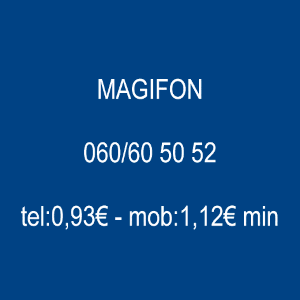





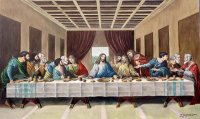

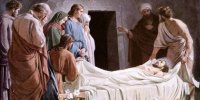







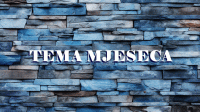
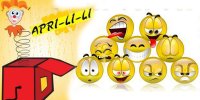

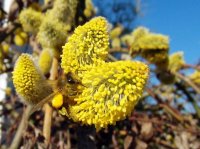

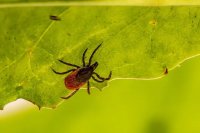







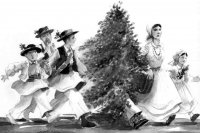

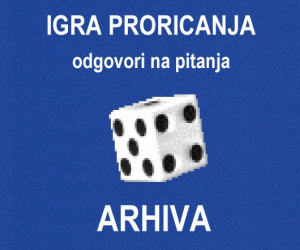













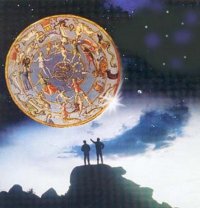

 bglavac
bglavac irida
irida


